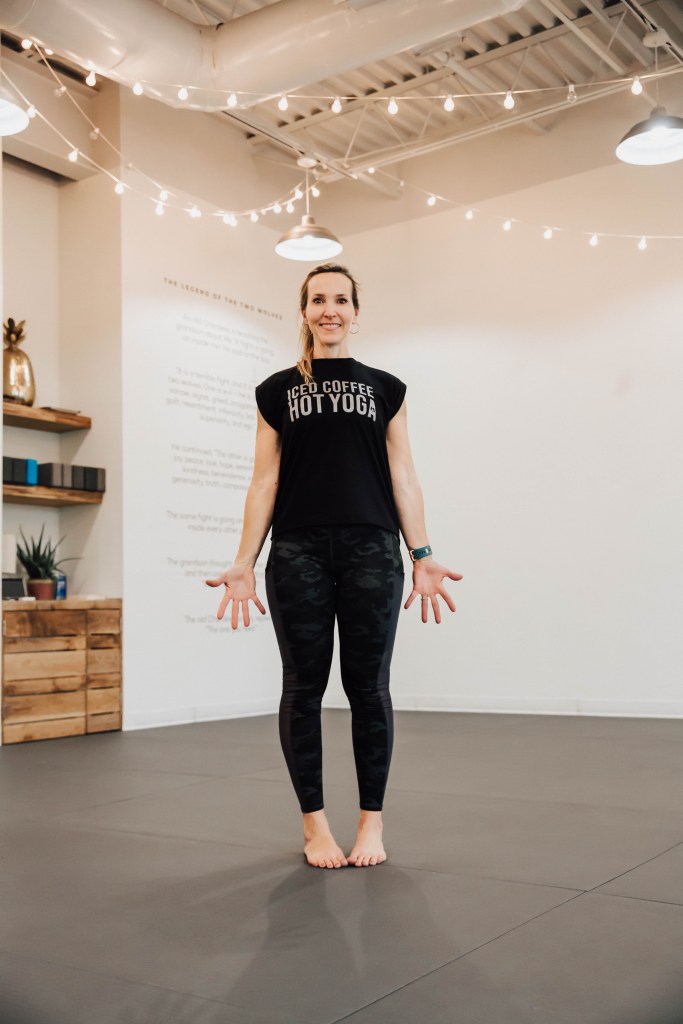5 yoga poses to incorporate into your daily routine
Published 8:00 am Tuesday, January 19, 2021

- BU4A1161.jpg
Heinen’s yoga background is somewhat different from your typical yogi. She was a pilates instructor attending yoga classes. One day the yoga instructor did not show up and the manager of the gym asked if she could teach. Having no knowledge, other than a few previous classes she had attended – Heinen said yes. The following week she showed up to attend and the yoga instructor sent a message that she couldn’t make it again and would have to quit. Heinen was asked to take over.
She started researching and studying yoga, got certified and began her yoga journey. Fast forward ten years, she now owns GoodWolf Power Yoga Studio and loves yoga more every day.
Trending
Mountain Pose (Tadasana)
This pose looks easy, because it’s basically just standing. But it’s the basis for all the other standing poses and inversions.
If you do this actively, you’ll be working your torso and legs, and you’ll be grounding yourself. This can be great for confidence and easing anxiety.
Stand with your big toes barely touching, and your heels slightly apart. A good way to gauge your stance is to see if your second toes are parallel.
Press into all four corners of your feet: big toe, little toe, right side heel, left side heel. As you push into your feet, feel how that engages your entire leg and keeps those muscles active.
Take a deep breath and roll your shoulders up and back, releasing them down, so your shoulder blades are resting toward each other and your neck is long.
Trending
Take a few deep breaths here. Close your eyes if you like.
Forward Fold (Uttanasana)
When you’re ready to move on, take a deep breath.
On your inhale, lift your arms to the sides and up, over your head.
On your exhale, release your arms (either in front of your body or out to the side, like a swan dive) as you fold your torso over your legs. On the first time through, have at least a slight bend in your knees. No matter how flexible you are, your hamstrings will be cold when starting out, and you’ll want to be gentle with them.
As you relax into the pose more, begin to straighten your legs as far as feels good. Anything that pinches or is a shooting pain should immediately stop your movement. Let gravity do the work here — don’t pull yourself down and try to force the fold.
You can put your hands on your shins, your feet, or the floor. This passively lengthens your spine and your hamstrings, and it’s also a great way to work on balance.
Plank Pose (Uttihita Chaturanga Dandasana)
This is a very active pose that works all the muscles of your front body.
From Forward Fold, put your hands flat on the floor, bending your knees as much as needed to do so. Step back one leg at a time, until you’re in a high Plank Pose.
Press into your hands, keep your legs parallel and engaged, and pull your bellybutton toward your spine.
Take a few deep breaths here, working your core and your arms.
It’s easy to drop a little too much and get “banana back” or to hunch your shoulders. A good way to figure this pose out as a beginner is to get a friend to look at the shape you’re making from the side.
Your upper body, from your hands on the floor, up to your hips, should be relatively straight, allowing for some curves due to natural spine curves.
Downward-Facing Dog (Adho Mukha Svanasana)
This pose elongates your spine, stretches your back leg muscles, and aids in digestion. Since it’s a mild inversion, it can release stress, help with headaches, and calm the nervous system.
From Plank Pose, push into your hands and lift your hips up and back on the inhale. One thing that can be tricky with this pose is, again, keeping your shoulders engaged but not working too hard, and keeping a neutral spine.
Your legs should be straight, and your heels working toward the floor. There will probably be some space between your heels and the floor. You could be very flexible, but if your legs are a bit on the long side, you probably won’t have your heels all the way to the floor. That’s fine. Keep your legs active and heels reaching toward the ground.
Your first time in this pose, pedal out your feet a little to warm up your leg muscles.
Child’s Pose (Balasana)
In any yoga class, this is a good pose to come to if you want to rest and reset your nervous system.
In Downward-Facing Dog, take a deep breath. On the exhale, release your knees to the floor, pull your hips back to your heels, and rest your forehead on the floor.
You can either leave your arms stretched in front of you or pull them next to your body, hands resting palms up near your feet.
This is a restorative pose, so adjust it to your needs. If you want to widen your knees a bit, do so. Like all forward folds, this pose is nurturing. It relaxes your spine, shoulders, and neck, and massages your internal organs.
Benefits
1. Can Decrease Stress
2. Relieves Anxiety
3. May Reduce Inflammation
4. Could Improve Heart Health
5. Improves Quality of Life
6. May Fight Depression
7. Could Reduce Chronic Pain
8. Could Promote Sleep Quality
9. Improves Flexibility and Balance
10. Could Help Improve Breathing
11. May Relieve Migraines
12. Promotes Healthy Eating Habits
13. Can Increase Strength
The Bottom Line
Multiple studies have confirmed the many mental and physical benefits of yoga.
Incorporating it into your routine can help enhance your health, increase strength and flexibility and reduce symptoms of stress, depression and anxiety.
Finding the time to practice yoga just a few times per week may be enough to make a noticeable difference when it comes to your health.





